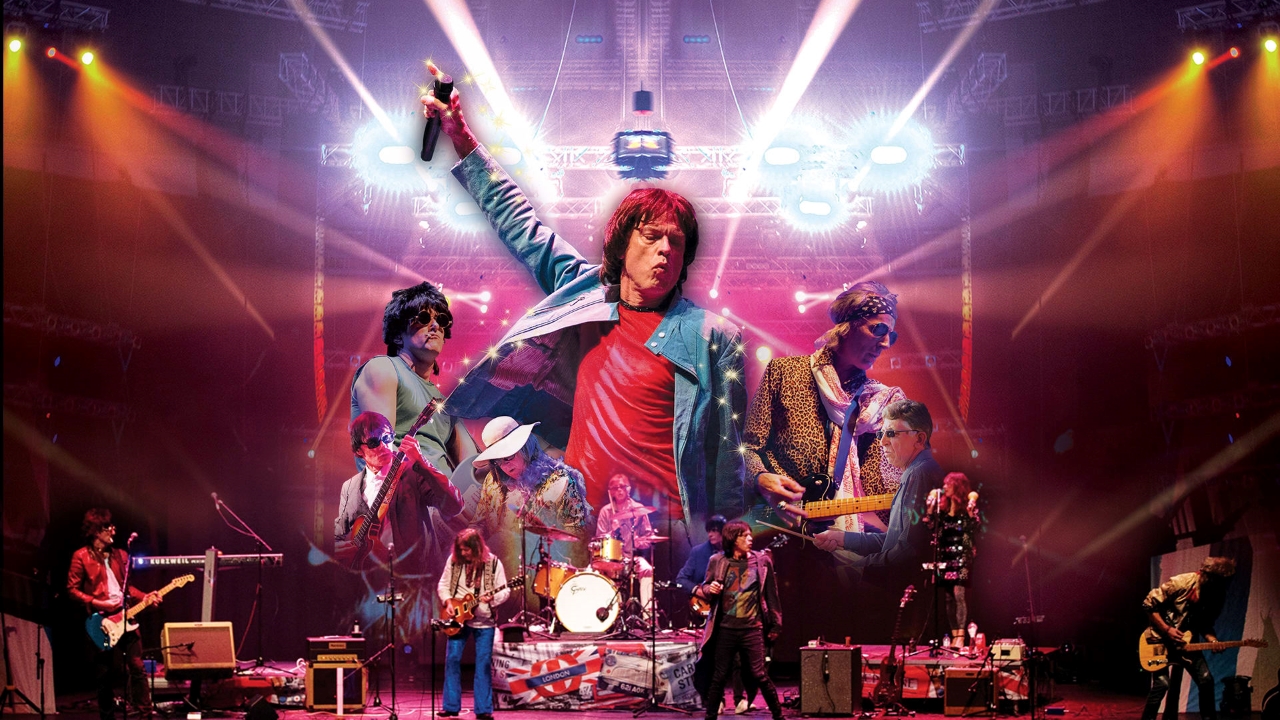🌑 The Darkness Before the Spark
By the late 1960s, the Rolling Stones were standing at a dangerous crossroads. The counterculture was raging, psychedelic music was dominating charts, and the Stones themselves had just gone through a storm of drugs, arrests, and an identity crisis. Albums like Their Satanic Majesties Request (1967) showed them experimenting with psychedelia, but it felt unfocused compared to The Beatles’ Sgt. Pepper.
Keith Richards later admitted: “We went a little too far with acid. We needed to get back to the dirt, to the essence of what we were.”
That essence was raw rock and roll. No fancy orchestrations, no swirling effects—just riffs, sweat, and attitude. Out of this longing for simplicity, one of the Stones’ most powerful songs was born.

⚡ The Birth of a Riff in the Dead of Night
The origin of “Jumpin’ Jack Flash” has almost mythical status. One night, Keith Richards and Mick Jagger were at Richards’ countryside home, Redlands. The two were working on new music, strumming guitars, surrounded by the haze of late-night silence. Suddenly, Richards’ gardener, Jack Dyer, stomped across the yard in his heavy boots.
Mick, startled, asked: “What’s that?”
Keith replied casually: “Oh, that’s Jumpin’ Jack.”
The phrase stuck in Jagger’s mind, and almost instantly, the two started riffing around it. Keith picked up his guitar and hammered down on a dirty, open tuning riff—sharp, percussive, primal. Mick shouted a line: “I was born in a crossfire hurricane!”
The song poured out like lightning.
What emerged that night was not psychedelic whimsy but a battle cry. A return to the Stones’ roots.
🔥 Lyrics of Survival and Defiance
“Jumpin’ Jack Flash” isn’t just a rock song—it’s survival written into sound. The lyrics reflect Jagger’s sneering resilience:
-
“I was born in a crossfire hurricane…” evokes chaos at birth, a world already ablaze.
-
“I was drowned, I was washed up and left for dead…” recalls struggle, addiction, danger.
-
And yet, the refrain roars with triumph: “But it’s all right now, in fact it’s a gas!”
The Stones were telling the world: We’ve been through hell, but we’re still here—and stronger.
It was a message that resonated in 1968, a year marked by protests, assassinations, and political upheaval. The song wasn’t just personal—it was cultural defiance.
🎸 The Sound: Back to Basics, Louder Than Ever
Keith Richards’ guitar is the spine of the song. Using his now-legendary open E tuning, he created a riff that was jagged, muscular, and instantly recognizable. Charlie Watts’ drumming hit like a marching army, steady but explosive. Bill Wyman’s bass pulsed underneath, raw and heavy.
No trippy sitars, no lush studio tricks. Just a wall of rock, stripped down to bone and blood.
Producer Jimmy Miller, who would later guide masterpieces like Sticky Fingers and Exile on Main St., helped shape “Jumpin’ Jack Flash” into a sonic sledgehammer.
🌍 Release and Impact (1968)
Released as a single in May 1968, “Jumpin’ Jack Flash” shot to No. 1 in the UK and No. 3 in the US. For a band that had been flirting dangerously with irrelevance after their psychedelic detour, this was redemption.
Critics hailed it as the Stones’ return to form—raw, dirty, unapologetic rock and roll. Fans felt it too. This was the sound of the Rolling Stones reclaiming their crown as the “World’s Greatest Rock and Roll Band.”
🎤 From Studio to Stage: The Ultimate Opener
But the song’s real power was unleashed on stage. From the late 1960s onward, “Jumpin’ Jack Flash” became the Stones’ signature opener.
Why? Because that opening riff is like a flare shot into the sky—it commands attention. The moment Keith slams those first notes, stadiums erupt. Mick struts onto the stage, sneering into the mic, and suddenly, 60,000 people are on fire.
At Hyde Park in 1969, just two days after Brian Jones’ death, “Jumpin’ Jack Flash” kicked off the set—a cathartic, electric moment of grief turned into energy.
At Altamont in 1969, the song blared as chaos unfolded in the crowd, embodying both the power and danger of rock.
Decades later, at the Super Bowl Halftime Show (2006), the Stones chose “Jumpin’ Jack Flash” as the opener—proof that nearly 40 years later, it still shook the earth.
👑 Legacy: The Eternal Rolling Stones Anthem
“Jumpin’ Jack Flash” isn’t just a song—it’s an identity. It’s the Stones stripped to their essence: rebellious, untamed, and indestructible.
Keith Richards once said: “That song’s got everything. It’s got the groove, the attitude. It’s the one we can always count on.”
And indeed, the band has played it more than 1,100 times—making it one of their most performed songs ever.
It has become more than just a hit. It’s a ritual. When the Stones hit that riff, it means the night has begun. It means the Stones are alive, still defying time, still sneering at the world.
🎶 A Song That Never Ages
Over 55 years since its release, “Jumpin’ Jack Flash” hasn’t dulled. Its riff still feels urgent, its lyrics still spit fire, its groove still rattles stadiums.
And as long as the Rolling Stones continue to tour, one thing remains certain: somewhere, under the floodlights, Keith Richards will strike those opening chords, Mick Jagger will swagger across the stage, and the crowd will roar like it’s 1968 all over again.
Video